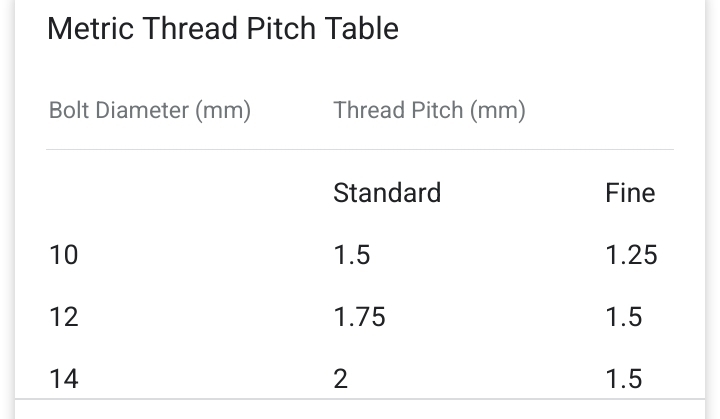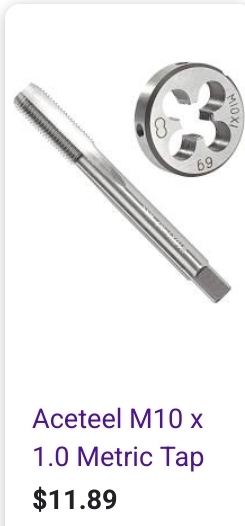Building a 3D printer is easy. Getting the details right to build a great 3D printer is hard, as this is where most companies fail. Why?
For example, on this printer, the bed is a three-point mount (two wheels for adjustment at the front of the printbed) and the printer’s bed levelling dialogue doesn’t show the height difference that needs to be adjusted (which most 3D printers do). It does show how much it needs to be turned, and the bed levelling wheels have 1/8th turn indicators, making it easy to get it perfect.
In short, instead of an arbitrary number like 0.3mm that has no meaning to the user, they tell the user to turn this knob 1/4 of a turn. An instruction the user can follow.
** Why is this so outstanding? It doesn’t cost much, but it improves the user experience. Are companies blind to these improvements because the engineers are experienced, or is there a lack of testing during development?**
By the way, years ago I did such a fix/modification myself on a Tronxy XY2 pro by adding indicators on the wheel for 0.2mm height difference so I could convert the number to rotation: https://www.printables.com/model/301670-replacement-bed-leveling-wheel
I would never use a 3D printer without auto bed leveling ever again. It’s not expensive to build it into your printer. Every major printer manufacturer has some version of this feature by now. Knobs and manual bed leveling is a thing of the past.
You should still have a roughly level bed, even with abl. It’s not meant to make up for a massively skewed bed, is and that will affect print quality if you ignore it.
I prefer a fully rigid mounted bed without these cursed springs. It either gets leveled once with shims, it the printer can adjust it’s x-y-plane to be coplanar with the bed (or adjust the whole bed to the x-y-plane). And yes it might need abl to compensate for thermal expansion, but not for small enough printers for example.
+1 on shim levelled bed. At least with a klicky probe and skew calibration which I already had before shimming, the supposed heat warpage related issues have not shown up for me. Maybe its more noticeable on different mounting methods.
My best tip for anyone using manual level knobs like these is to remove them full and replace the nut inside with a nylon lock nut. It will be a little bit harder to get back on but once it’s on, you’ll be able to turn it normally, albeit with a little more resistance. The lock nuts will allow you to go MUCH longer between leveling the bed. I maybe relevel the bed on my printer 2-3 times a year and it’s only a minor tweak to get it back to level.
Snapmaker J1s tells you which way to turn when you do the calibration steps, then measures how far you need to turn.
Shows a little bar and you have to get it in between. Feels like a real life quicktime event, lol.
Would you recommend buying the J1?
It’s extremely expensive to produce things with tight tolerances. Cheap 3D printers have gotten away with it by making things “good enough”. Which why you got this the other way around;
In short, instead of an arbitrary number like 0.3mm that has no meaning to the user, they tell the user to turn this knob 1/4 of a turn. An instruction the user can follow.
0.3mm is easy to measure with the right tool like digital indicator. On the other hand, quarter turn on a knob might adjust 0.3mm on one bolt, but 0.5mm on another.
Also as mentioned, ABL, cheap and can be DIYed. Cheap / printed parts can warped over time, bolts can shaken loose, etc. ABL just put these out of the equation.
I largely agree with what you’re saying, but was surprised to see that you called out that much variation in thread pitch. I would absolutely expect a lot of variation in the ability to measure z - especially since most printers rely on microstepping here. Thread pitch on the other hand is generally way more consistent. I am not a machinist, but it would be interesting if one chimes in. I don’t know what to ask Google to get some data here, but I strongly suspect there’s a term to use.
Even in millimeters, there’s a wide range in standard thread pitches. 1mm thread pitch in most common screw sizes is generally available, sure, but don’t always fit the “cheapest sufficient part” criteria.
EDIT: Dudes, the standard pitches between various sizes of metric screws does vary. This isn’t in reference to variations within a batch or whatever other garbage take 4 people apparently came up with, its just a fact.
 versus:
versus:

Good lord, I could machine you a set on my lathe, easilly, but its not necessary. Just get you a tap & die:

Where am I getting the idea that these manufacturers don’t think like this and just buy the cheapest crap they can find readilly available? My siblings in christ(or whatever), how do you think we came to be on this subject? Machines are getting put out with components where the pitches are all over the place in locations where it would make more sense to match them up.
You are looking for Design Affordances. Objects or symbols that indicate how you can interact with the object.
Companies usually hire trained Industrial Designers for this stuff. It’s why Apple and other companies like it are so popular (and pricey). Industrial Designers cost money and a lot of these printer manufacturers consider it an extra cost since these are subtle things when compared to the manufacturing and mechanical design of the printer.
a lot of these printer manufacturers consider it an extra cost since these are subtle things when compared to the manufacturing and mechanical design of the printer.
If there would be a $150 Ender 3 and a $200 one with identical hardware but perfect usability for beginners. I expect more people would buy the expensive machine compared to releasing a noname Ender 3 clone which tries to beat this hypothetical $150 price point.
An example would be the AnkerMake M5 and BambuLab lineup.
Yes but that wouldn’t make sense for Ender anyways. They’d still have to hire an Industrial Designer and other related professionals to take the existing design and improve the user experience. As another user commented, printers aren’t targeted for mass market so the considerations for a mass market (well defined affordances, ease of use) won’t be considered.
Screws with a left hand thread would be much appreciated, they would make the bed levelling process more intuitive.
I would absolutely hate this. Screws that function opposite of how you expect 99% of screws to work wouldn’t make it more intuitive for me.
I have seen on some budget printers a label with which direction is up and down so that’s a starting point. Also a lot of prints out there to add this information to the bed leveling wheel.



